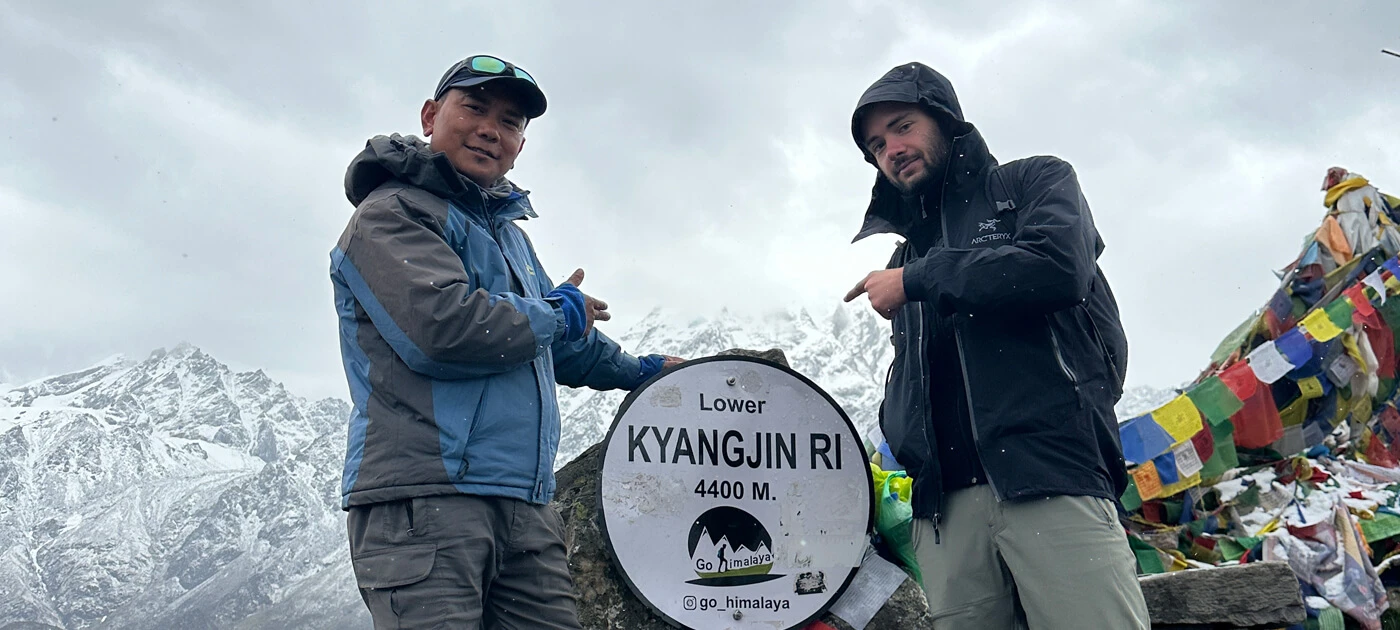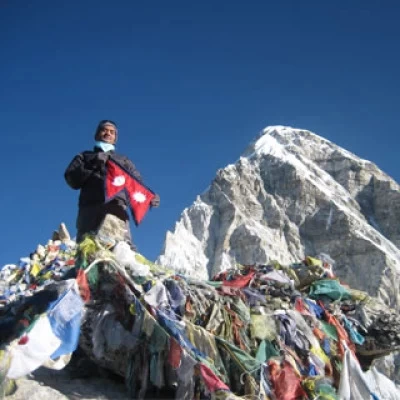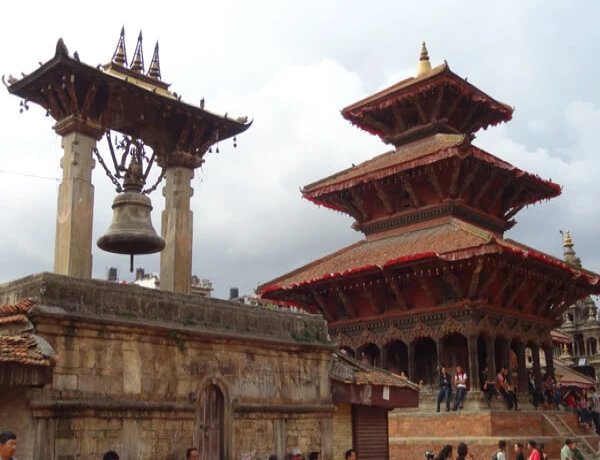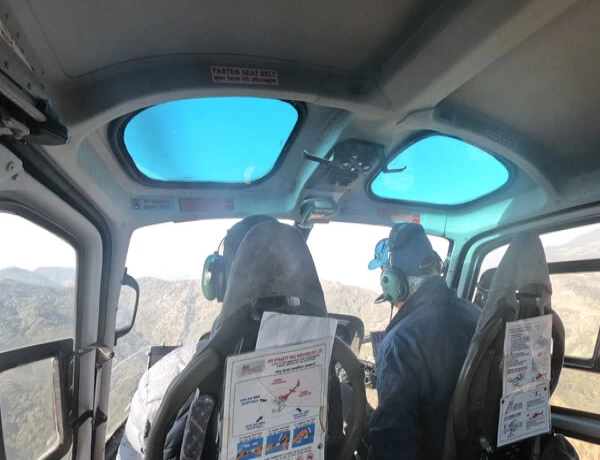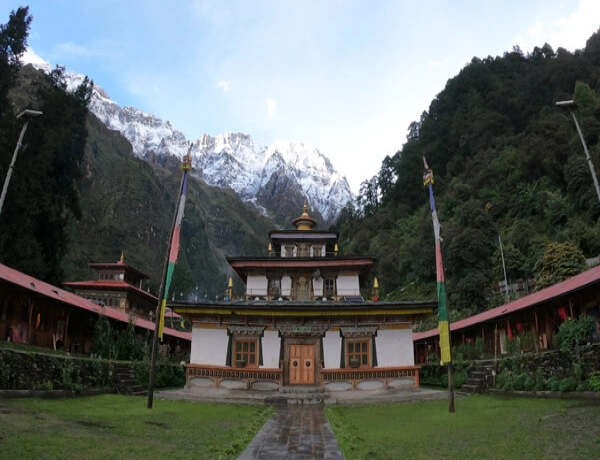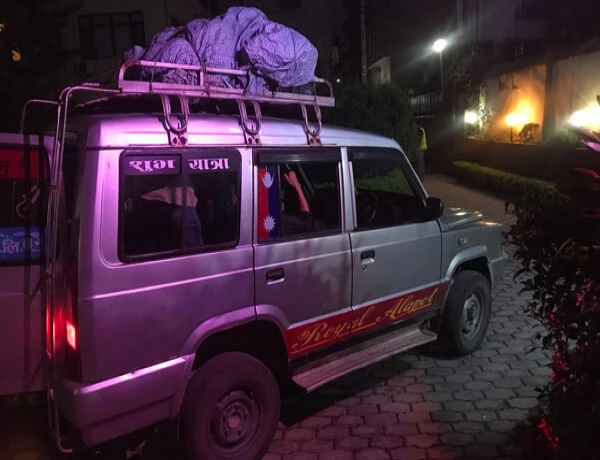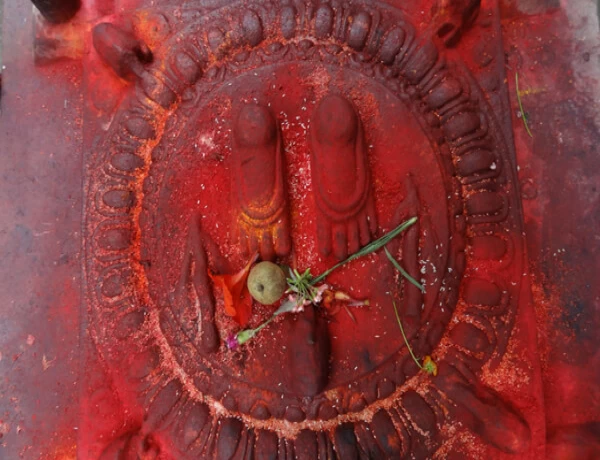While looking for the missing yak, the Tibetans discovered Langtang. In the local language, “Langtang” means ‘the place where yak was found.’ This is a brief overview of Langtang's origin; however, more details can be found in the Langtang Valley Trek Guide.
Complete Langtang Valley Trek Guide
Get a comprehensive guide to the Langtang Valley Trek before departing from your home for your lifetime experience.
There is a mysterious Beyul valley in the Himalayas called Langtang that is home to Tamang ethnic groups. The Langtang Valley Trek is all about experiencing the unique living heritage of ancient Tibetan culture.
In addition to immersing yourself in the rich culture, you may find yourself lost in the wilderness of Langtang National Park. The red panda, snow leopard, and musk deer are just a few of the majestic animals that live in the national park, along with its diverse flora and fauna.
For the main event of the trek, you will be at Kyanjin Gompa. It is a Himalayan town located at the foothills of the mighty Langtang Lirung (7,234 m).
If you are planning to trek in Langtang Valley, don't miss it. Read every detailed guide to Langtang National Park.
Here is the Langtang Valley Trek Overview
Duration: 7–10 days.
Lowest Elevation: 1,440 meters (4,725 feet) (Syabrubesi).
Highest Elevation: 4,773 meters (15,660 feet) (Kyanjin Ri).
Total Trekking Distance: ~65 kilometers/40 miles (both ways).
Total Riding Distance: 244 kilometers (both ways).
Transportation: public bus or shared jeep.
Trek Grade: Moderate.
Lodging: Tea houses, guest houses.
Langtang Valley Trek Highlights
- A perfect paradise for watching
- Home of rare animals
- Rich in flora and fauna
- Cultural significance of Tamang ethnics
- Great hospitality and kind people
- The sweet and short trek
- Visit ancient Kyanjin Gompa
- Taste world-class cheese
Where is Langtang Valley located?
Langtang is in the northern part of the Kathmandu Valley, sharing the border with Tibet. It is among the nearest trekking routes from Kathmandu.
It is located in Bagmati Province, Rasuwa district. Moreover, in the Gosainkunda Rural Municipality.
Towering peaks encircle the valley just below Mt. Langtang Lirung. The Yala Peaks, Scout Peaks, and many other peaks dominate the valley.
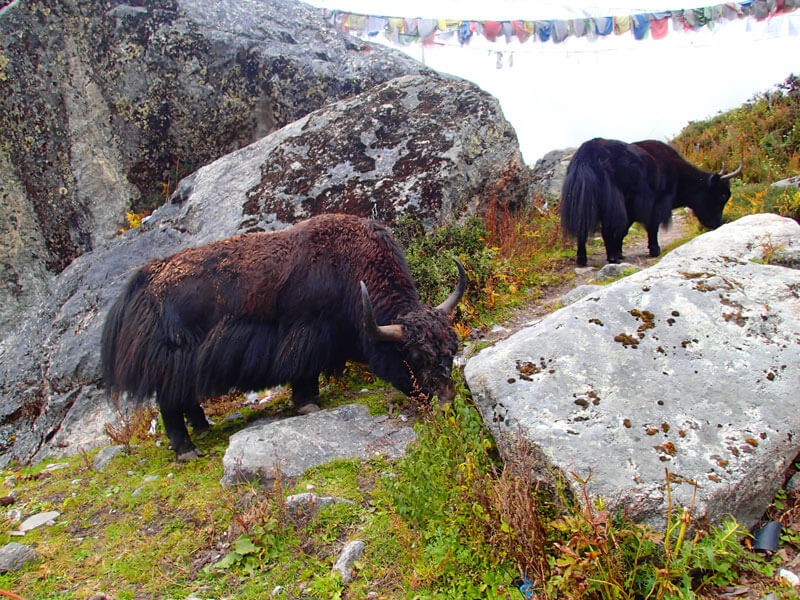
Langtang Valley Trek Guide: How to get to Langtang?
First of all, to reach Langtang, you need to take a ride to Syabrubesi. It can take 6–7 hours to ride.
The Langtang Trek is closest to the Kathmandu Valley, and getting into the Langtang is also easy. You can reach Langtang Valley by first taking land transport to Syabrubesi and then trekking for a few days.
When it comes to land transportation, there are two options: public bus or shared jeep. The jeep is the quickest, but it can cost extra bucks compared to the public bus.
Furthermore, you can hire a private Jeep for yourself. Furthermore, you can charter helicopters too, but it is the most expensive choice of all.

Langtang Valley Trek Guide: The best time to visit Langtang Valley
If you are planning to trek Langtang Valley in the perfect season, then spring and autumn are the best options. However, the Langtang Valley Trek is also suitable during winter because it requires crossing high passes, even in heavy snowfall. September to June is also a good time for the Langtang trek.
Unlike spring and autumn, other seasons don’t have clear weather. You can enjoy trekking in every season. But you have to tackle some obstacles.
What is the difficulty level of the Langtang Trek?
All types of trekkers find Langtang Valley to be an easy trail. They also label it as a moderate trek.
The first half of the route is intense due to continuous ascending and descending. And the second half is much easier.
Brief Itinerary for Langtang Valley Trek
07 Days Langtang Valley Short Trekking Suggested Itinerary
Day 01: Drive by Bus from Kathmandu to Syabrubesi (1,440 m) for -7 to 8 hours
Day 02: Trek Syabrubesi to Lama Hotel (2,470 m)—5 to 6 hours
Day 03: Trek Lama Hotel to Langtang (3,430 m)—5 to 6 hours
Day 04: Trek Langtang to Kyanjin Gompa (0 m, 3 to 4 hours) Visit Five Lakes, the airport, and the cheese factory.
Day 05: Visit Kyanjo Ri (4750 m) viewpoint in the morning, Trek back to Rimche (2399)—5 to 6 hours
Day 06: Trek Rimche to Syabrubesi (1,440 m)—5 to 6 hours
Day 07: Drive Back to Kathmandu by Bus (7 to 8 hours) and your home destination
The itinerary of the Langtang Valley Short Trek is quite flexible. This is just a normal itinerary; you can even extend it or make it short.
How do the trails look from Syabrubesi to Kyanjin Gompa?
This itinerary is normal, but our main aim is to show what the trail is going to look like. Here is the complete Langtang Valley Trek Guide:
Trek Syabrubesi to Lama Hotel
On the first day of the trek, it begins after crossing the intersection of the Bhote Koshi River and the Langtang River. A few minutes of pleasant walking on the trail will lead to the Tibetan Camp (Tiwari). After crossing the river from the Tibetan Camp, you will reach the ongoing hydroelectric construction near a small settlement called Domen.
Then, the trail starts to go uphill for a few minutes. As the uphill section ends, the trail becomes easier as you approach a place called "Pahiro." The place is located just beside the river and has a couple of tea houses. Afterward, you will walk in the true wilderness of Langtang National Park.
Furthermore, the walk in the wilderness is not as straightforward as it seems. The trail includes several ascents and descents along the way. along the way. About 1 hour of walking from Pahiro takes us to the Bamboo, which will be an ideal place for the lunch break.
After leaving Bamboo for lunch, the trail ascends slightly and leads to the suspension bridge. A few minutes of ascending will take you to the landslide. Then, the trail continues from there to Rimche village, which has two wonderful tea houses.
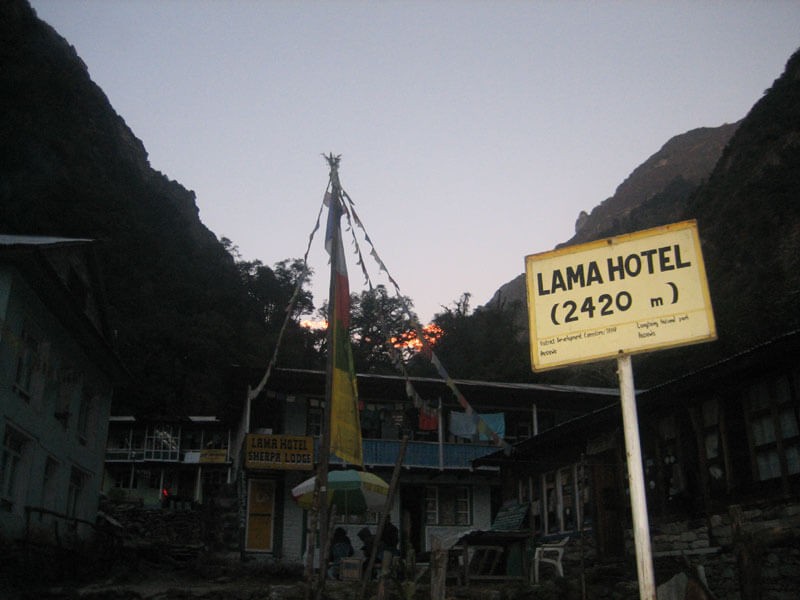
Rimche is also a wonderful place to stay beside the Lama Hotel. This place is quiet and peaceful. Moreover, it has a wilder view of humongous hills.
Just a quarter of trekkers will reach Lama Hotel, which has lots of tea houses. It is located in the middle of the jungle and has a sizable settlement surrounding it.
The first day of the trek will undoubtedly be a strenuous walking day. You must be physically and mentally prepared.
Hike Lama Hotel to Langtang Valley
After leaving Lama Hotel, the trail follows the gorge of the Langtang River. As you go upward, the subtropical forest changes into an alpine forest. Watch out! You m The trail is still going up and down, but it won't be as hard as yesterday.
to be as tough as the previous day. After walking for an hour of ups and downs, you will reach Riverside. On this day, you will see the breathtaking scenery that includes Gangchempo Peak.
scenery along with Gangchempo Peak. Just a few minutes of walking through the dense forest, and you will reach Chhunoma with a single teahouse. Then, the trail ascends for a short distance. Again, it goes down towards the bridge.
After crossing the bridge, the trail changes into a steep uphill for a while. As the uphill finishes, further along the trail, you may see some naks (female yaks) being used in some farming for milk production. Again, crossing the bridge, you will reach Ghodatabela (stable) in no time.
As mentioned before, after passing Ghodatabela, the trail becomes easier. The valley is so wide open you can see Alternatively, if you wish to continue, you can have lunch here. Alternatively, if you prefer to continue, you can have lunch a little further in Thyangsyap.
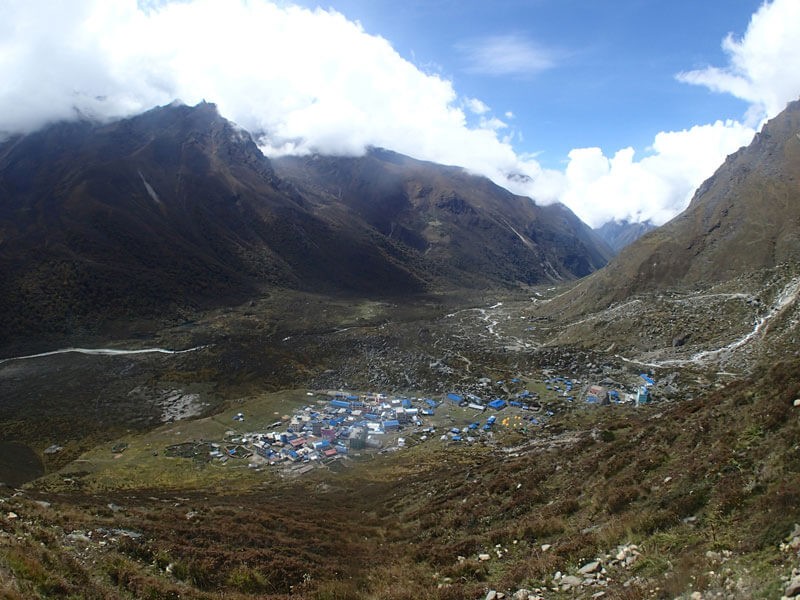
But before reaching Thyangsyap, you should burn some calories climbing steeply uphill for around 15 minutes. Continuing after having lunch, you will be walking on a pleasant trail, enjoying the view of Gangchempo Peak, Langshisa Ri, Dorje Himal, Pangen Dopku, Naya Kanga, and many more.
At this point, you are already above 3,000 meters. So, take your pace and walk slowly.
Just before reaching Langtang Valley, you will pass through a small settlement with a few tea houses. From there, you can see the landslide that the 2015 earthquake caused. It was so massive that it wiped out the entire Langtang Valley, leaving only one building. Rest in peace, all those beautiful souls.
After crossing the landslide, you will be in the Langtang Valley. The new valley looks so promising and represents a new beginning. When you check in to your tea house, you can pay a brief visit to the valley and sip a coffee in a nearby cafe.
Trek Langtang Valley to Kyanjin Gompa
Today, you can relax, as Kyanjin Gompa is only a few hours away from Langtang Valley. In the morning, you might enjoy the sunrise and have breakfast below the mighty Langtang Lirung.
The trek begins with a short ascent, which will be the only challenge of the day. As you finish climbing, the trail will introduce a wider valley along with a panoramic view. You will pass through many Mani Walls inscribed with “Om Mani Padme Hum.”
Furthermore, you will reach Mundu village with some tea houses. This village is so beautiful, you might take a break and have some tea. Likewise, be careful not to overexert yourself while passing Mani Walls on the way. The trail is easy, but be cautious not to overexert yourself. Like other days, you will follow the trail with the giant liver.
When you walk further, you will see an inscribed, giant stone. The path will split into two after that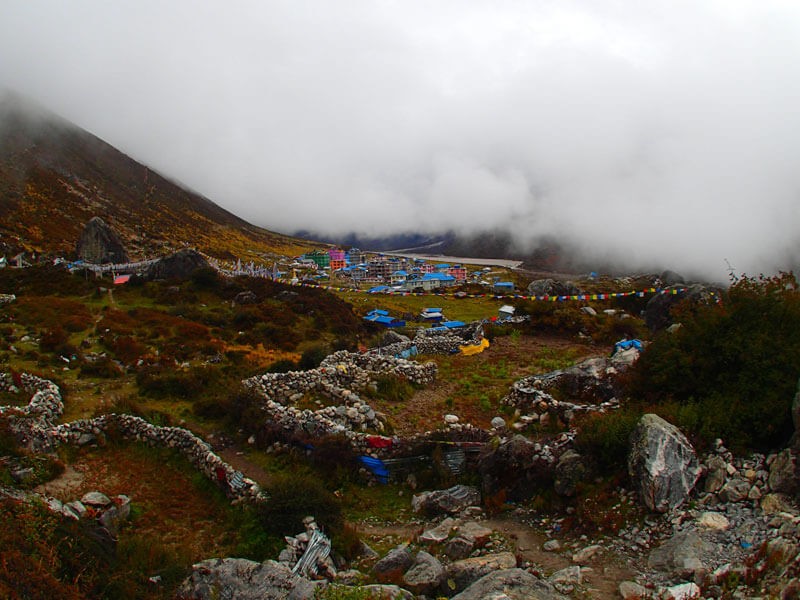
The upper one leads to the hydropower; furthermore, the soup. The lower one is much easier and shorter. Furthermore, you will see the towering Kyanjin Ri peak.
It is better to choose the upper way; you can spend some time in the stupa. After spending quality time, you will be in Kyanjin Gompa in a few minutes. You will not see Kyanjin Gompa until you reach there. And it is the last civilization of the valley.
You will have lots of spare time when you reach Kyanjin Gompa. In the meantime, you can roam around the town and visit the Cheese Factory and the old Kyanjin Gompa monastery.
Return to the same trail from Kyanjin Gumba
After spending quality time in Kyanjin Gompa, it’s time to return. While returning, you will be retracing the same trail you came up with. You will be walking through the same towns, like Langtang Valley, Ghodatabela, Riverside, and Bamboo.
While returning, the journey will be easier because most of the ascent will have already been completed. Coming down will be quicker and easier than climbing. At a minimum, you can come down to Syabrubesi in just two days. If you are an experienced hiker, then you can do it in a single day.
Or, you may extend a day while returning. You can travel via Sherpa Gauserenewill and not regret spending a night in the village. It is serene and peaceful. It shares the wider view consisting of Thulo Syabru, Chandanbari, and other villages.
If you want to extend more days, then you may continue your trek through the Gosaikunda Trek route or Tamang Heritage Trail eventually. This trek may take longer than you expected, but it will ultimately conclude in the Kathmandu Valley.
Enjoy Langtang Valley Trek throughout the Video
Langtang Trek Ultimate Guide, Kyanjin Gompa, and Places to Explore
Kyanjin Gompa is regarded as the highlight of Langtang Valley. Usually, people consider Langtang Valley to be the primary target of the trek. But Kyanjin Gompa is the best spot of all. Mountains encircle it in all directions. Interestingly, Kyanjin Gompa is the most developed town, boasting
Tang Valley. Surprisingly, it is the most developed town, with everything you need readily available here. cheese factories. Everything you need is readily available in this place.
Not only that, but from here, you have lots of options to explore on the Explorer We have prepared a list of spots to explore, but it will take days to visit them all. We have prepared information about a spot you might visit during your stay in Kyanjin Gompa.
One of the views is Point Kyanjin Ri
Kyanjin Ri is the most visited spot in the Kyanjin Gompa. It has two summits, upper and lower. The height of the upper one is 4,773 meters, and the lower one is 4,400 meters. An hour of steep uphill will take you to the lower peak, and an additional hour will take you to the upper summit.
The peak shares the most rewarding 360 panoramic views, consisting of Langtang Lirung, Changbu, Kinshung, Kangtang Yubra, Yala Peak, Langshisa Ri, Gangchempo, Dorje Himal, Pangen Dopku, Scout Peak, and numerous peaks.
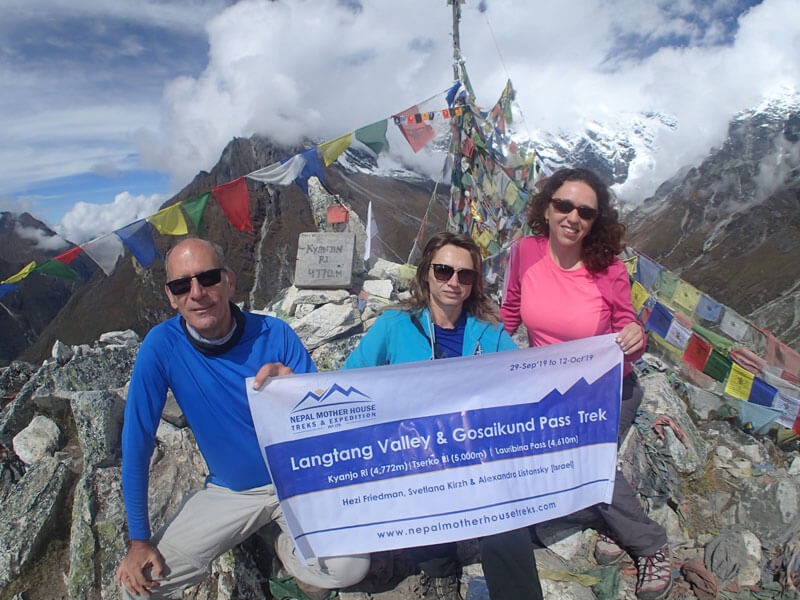
Explore the Tserko Ri from Kyanjin Gumba
Tserko Ri is another spot loved by tourists. Situated at a height of 5,033 meters, it is more complicated than Kyanjin Gompa. You must spend a whole day exploring the summit of Tserko Ri. In addition, you need to carry a packed lunch. It will be too late to return to Kyanjin Gompa for lunch.
The view is more rewarding than Kyanjin Ri. The higher altitude often provides a majestic view. Likewise, you can witness every peak you can see from Kyanjin Ri, along with Pemzom Himal, Dorothea Himal, Bhemdang Karpu, Pemthang Karpo Ri, and so on.
Visit the Langshisa Kharka
Langshisa Kharka is a grassland situated at the foot of Salbhachum Glacier on the north and Langshisa Glacier on the south. It can take 3–4 hours to reach Kharka. And like Tserko Ri, you need a whole day to visit the spot. In the monsoon season, stockmen take their yaks and naks to graze there.
It is a wide grassland in the middle of glaciers and mountains. It has the iconic view of Langshisa Ri and Gangchempo, among other viewpoints. On the full moon of August (Shrawan in the Nepali month), there is a festival of local people, who gather and prepare for the feast.
Don't forget to Visit Kyanjin Gumba
Kyanjin Gumba is an old monastery situated northwest of Kyanjin Gompa. The place is also nameder it. Therefore, you can visit it. It is just a few minutes away from the town. You go there in your spare time.
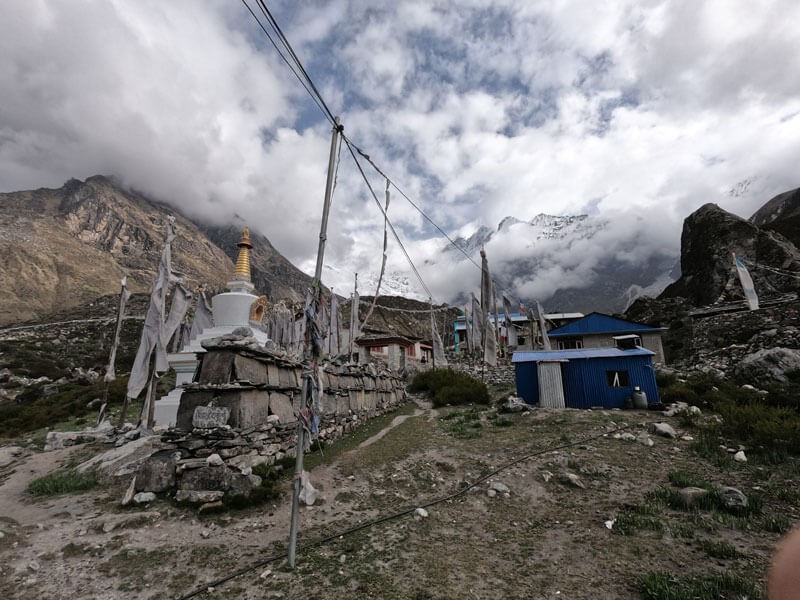
At Yek Cheese Factory, yak milk is the main ingredient used to make the cheese.
just below the Kyanjin Gumba. Yak milk is the main ingredient in the cheese. DDC Nepal, a government-owned company, established the factory 70 years ago. The factory still uses the traditional way of making cheese in this modern age. You can find the cheese in the godown of DDC in Lainchaur, Kathmandu.
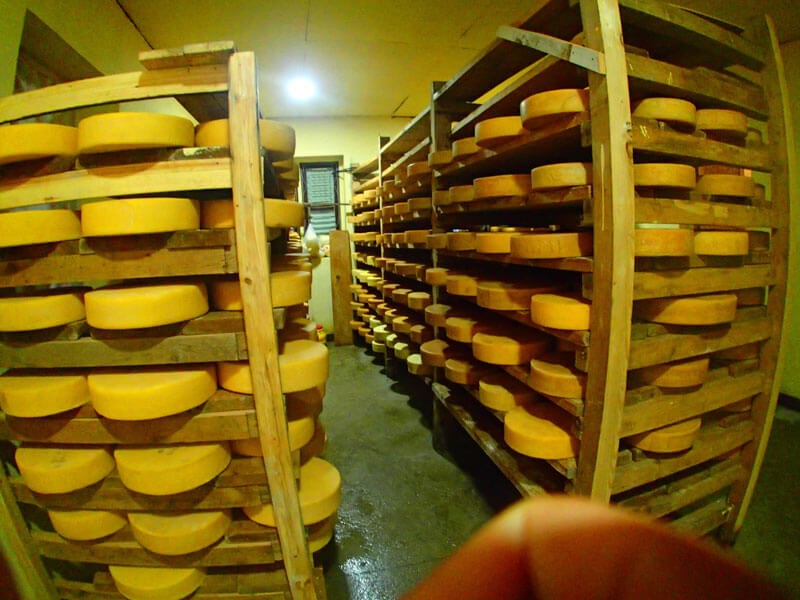
Small, Beautiful Kyanjin Lake: Must Visit
Kyanjin Lake is the lake above the hydropower plant. It is an artificial lake built for the forceful current to produce electricity Furthermore, the path is not straightforward, and one has to climb for an hour. Furthermore, you may have a challenging time finding the right way. Once you reach there, you can have a surreal view of the massive mountains and the lake itself. There are five beautiful small lakes below the town, including the Holy Lake.
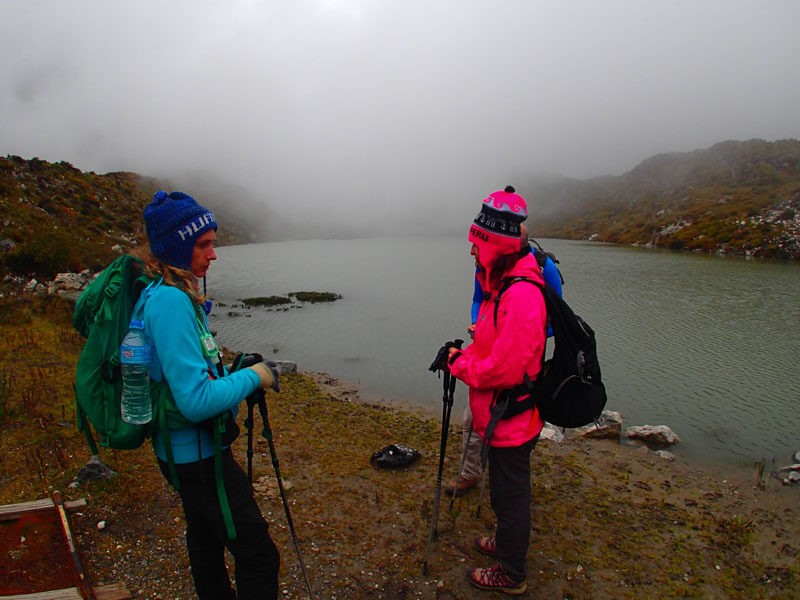
If you Have time, Visit Langtang Base Camp and Padmasambhava Cave
Langtang Base Camp is the most technical spot to explore on the list. It is on the northern side of the town, passing through Kyanjin Lake. It can take 4-5 hours to reach the base camp from the Kyanjin Gompa. Only an experienced guide can take you to the base camp. Snow landslides frequently block the You will also visit the renowned Lirung Glacier and Padmasambhava Cave during this time. He was a great teacher in the 8th and 9th centuries Only a small number of trekkers have visited this cave so far, primarily because only a few guides and porters are aware of its existence. I have not visited the cave yet because only a few guides and porters are aware of it.
Enjoying a walk along the Langtang River Shore
In the entire trail, you followed the Langtang However, Kyanjin Gompa offers an entirely different experience. The riverbank below Kyanjin Gompa is so wide that it divides the once small river into many. The bank is so wide that it divides a once small river into many. The shore is so calm and serene that it is worth exploring.
let's see Langtang Trek Map
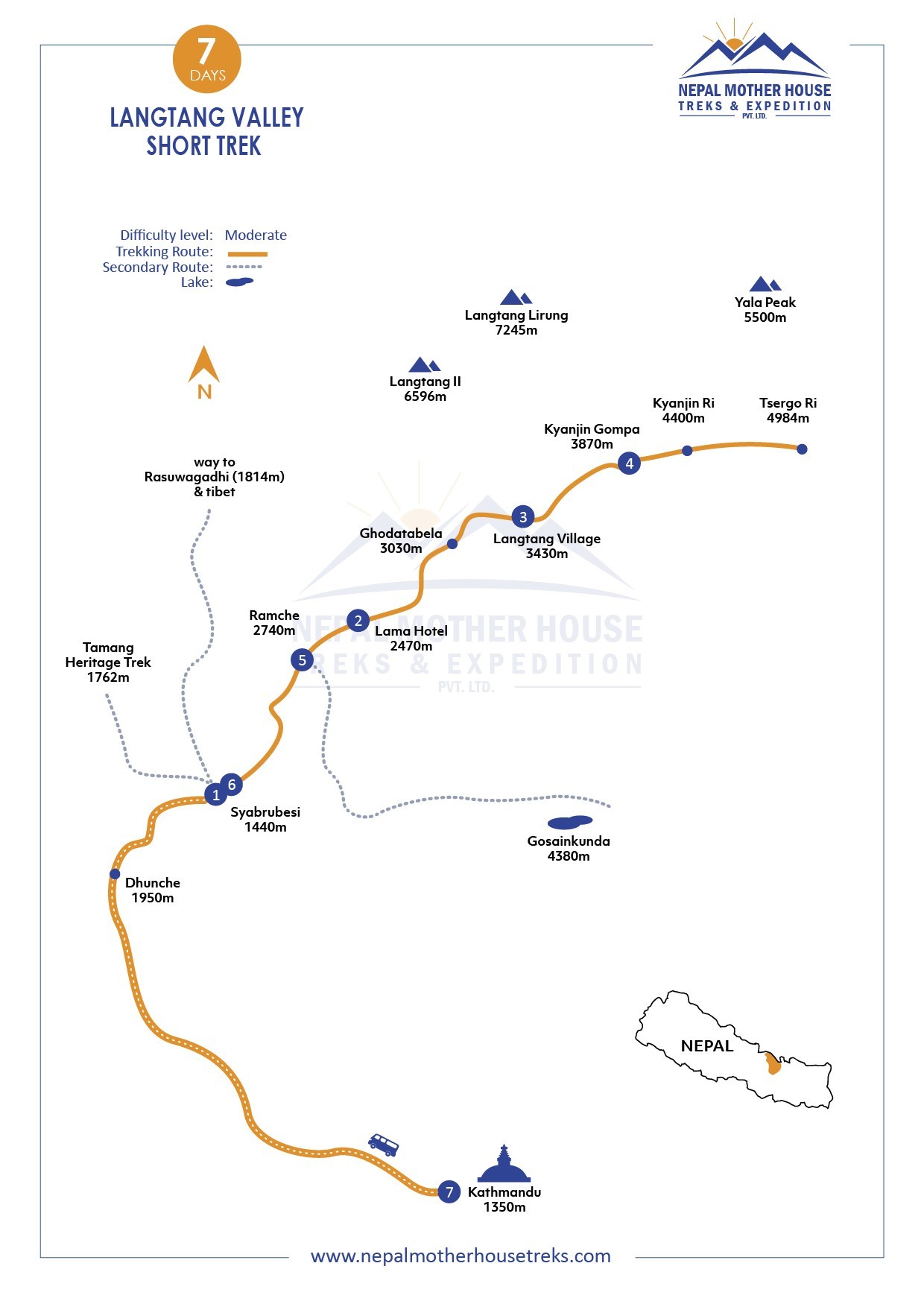
Here is the Langtang Trek Altitude Chart
 Basinational Parkcasicc Essentials Guide to Langtang Valley Trek
Basinational Parkcasicc Essentials Guide to Langtang Valley Trek
You can’t hop directly on the trekking route without knowing what the essentials are. We are talking about the requirements for the trek and what facilities you are getting along the route.
Hire a personal Guide
A trekking guide is not mandatory to trek around Langtang National Park territory. You can travel independently. However, we strongly advise hiring a guide due to the unpredictable nature of the national park.
Organize Permits the Langtangork
The Langtang Trek requires two permits: the Langtang National Park Permit and TIMS cards.
A Langtang National Park permit is compulsory. You can either get it from the Nepal Tourism Board The Trekking Agency Association Nepal (TAAN) distributes the TIMS permit at their head office.

Visit the head office of Trekking Agency Association Nepal (TAAN). Currently, there are no checkpoints for the TIMS permit. But it's better to make one for a trouble-free vacation.
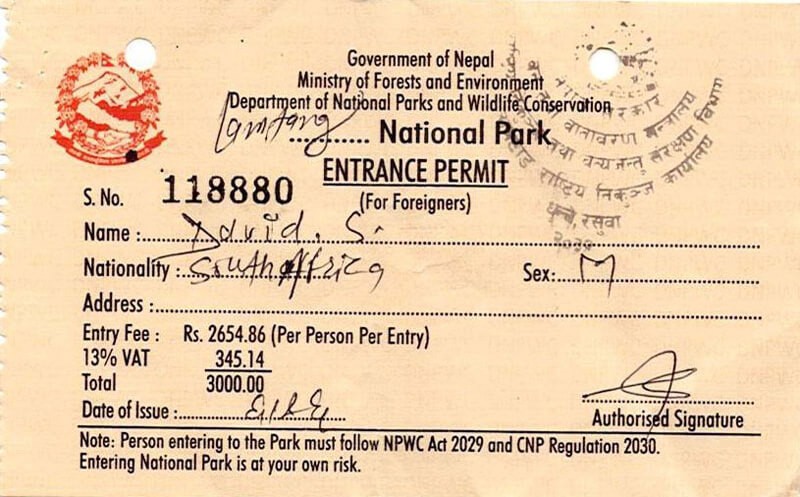
What kind of accommodation is available on the Langtang Trek?
The accommodation you get on the Langtang Valley trek is a basic teahouse. These teahouses represent the basic standards of accommodation in the Himalayas, offering sleeping quarters and food services.
In Syabrubesi, you can excel because, furthermore, there are plenty of choices for hotels with excellent standards. Furthermore, Langtang Valley and Kyanjin Gompa Tea Houses are pretty excellent, with fine lodging and dining areas.
However, the teahouses located between Syabrubesi and Langtang Valley offer only basic accommodations. There are plenty of choices; you can choose which is suitable for you.
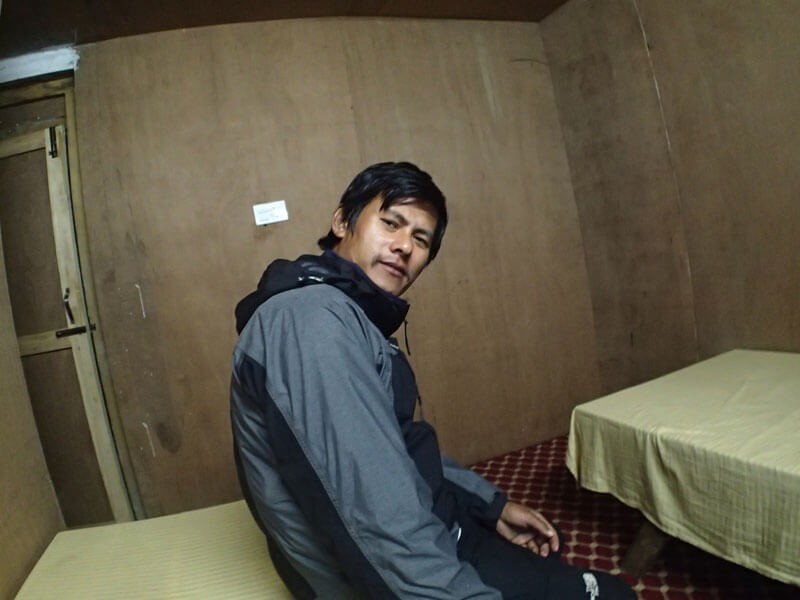
Are Wi-Fi and electricity available in Langtang?
Electricity is available in every place along the route. Some tea houses even have sockets in the room, but not all of them. You can charge your devices and gadgets for free.
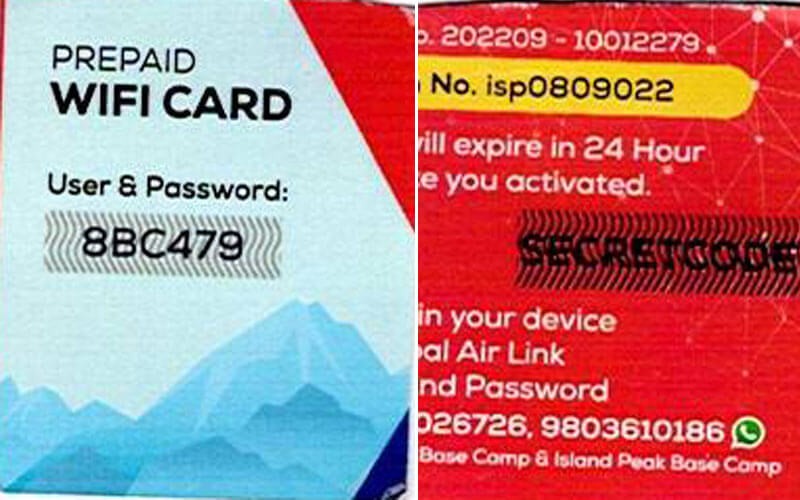
WiFi is available only in some limited places. It doesn't cost anything for the WiFi in Syabrubesi. However, in the upper settlements, the available WiFi service is Everest Link, which requires a prepaid plan.
Can you buy drinking water for the entire trek?
Access to drinkable water is crucial while trekking in the Himalayas. A single drop of contaminated water can ruin your whole trek.
Additionally, mineral water bottles are available everywhere along the trekking route. Additionally, mineral water bottles are available at numerous locations along the trekking route. Additionally, the cost of mineral water may exceed your expectations. The higher you go, the higher the price gets.
The best recommendation for drinking water is to bring a means of water purification. You can carry a portable water filter, a Using these methods can provide you with safe drinking water and help you save some money. It can give you safe drinking water as well as save some cash.
Check your packing list to make sure the gears for the Langtang Valley Trek
We have provided a complete packing list guide for the Langtang Valley Trek. You almost need every item on the list, but don't overdo it. The list is like this:
- Lightweight hiking shirt
- Full or half pants or trousers
- Hiking Underwear
- Thermals
- A pair of good-quality trekking shoes
- cheater Jacket and trousers
- Lightweight down jacket
- A pair of hiking sandals
- Gloves
- Lightweight hiking socks
- Shorts
- Light underwear
- Comfortable Sports Bras (for girls)
- A Sun Hat
- Sunglasses
- Trekking Pole
- Backpack/Daypack
- Toiletries (sunscreen, face , and body moisturizer, Lip guard, Toothpaste, toothbrush, multipurpose soap, shampoo, hand sanitizer, lightweight towel, toilet paper, deodorant, sanitary pads, nail clippers)
- First aid kit with medicines (for altitude sickness, Diarrhea, sprains, and colds)
- Documents (passport, visa, travel insurance, air tickets, vouchers, passport-sized photos, maps, change money, permits)
- Miscellaneous (camera, extra batteries, power bank, tripods, journal, pen, books, cards, snacks, bars, reusable water bottle, torch, binoculars, water purification tablets)
- Lightweight hiking shirt
- Full or half pants or trousers
- Hiking underwear
- Thermals
- A pair of good-quality trekking shoes
- cheater Jacket and trousers
- Lightweight down jacket
- A pair of hiking sandals
- Gloves
- Lightweight hiking socks
- Shorts
- Light underwear
- Comfortable Sports Bras (for girls)
- A Sun Hat
- Sunglasses
- Trekking Pole
- Backpack/Daypack
- Toiletries (sunscreen, face , and body moisturizer, Lip guard, Toothpaste, toothbrush, multipurpose soap, shampoo, hand sanitizer, lightweight towel, toilet paper, deodorant, sanitary pads, nail clippers)
- First aid kit with medicines (for altitude sickness, Diarrhea, sprains, and colds)
- Documents (passport, visa, travel insurance, air tickets, vouchers, passport-sized photos, maps, change money, permits)
- Miscellaneous (camera, extra batteries, power bank, tripods, journal, pen, books, cards, snacks, bars, reusable water bottle, torch, binoculars, water purification tablets)
See Langtang Valley Trek Cost Detail before booking the trek
The Langtang Valley Trek is the most affordable trekking route in Nepal. The cost can depend on different aspects, like lodging, food, water, and other services you use. But we will provide a rough sketch of the price so you can spend your money wisely.
Let's start with the lodging. It can be around $2–$5, depending upon the standard of the tea houses. Remember, the higher the price gets. In Syabrubesi, you can find various hotels, ranging from the cheapest rooms to deluxe rooms.
Foods may be the most expensive of all. A single meal costs $3–$6 in addition to hot beverages that cost $0.50–$2. Dal Bhat is the most expensive item on the menu and, at the same time, the best to pick.
Drinking water is available in every tea house. It can cost in the range of $1–$3 per 1-liter bottle. As is typically the case, drinking water is pricier in higher settlements. As said before, you can save money by using water purification.
Charging electronic devices is free (other trek routes take some money). Wifi is free in Syabrubesi and in Bamboo. Some places don’t even have internet access. However, in upper settlements, prepaid Wi-Fi services cost $6 for 600 MB.
Talking about the permits, Langtang National Park costs $30, and the TIMS cards cost $10. Likewise, the bus fee for one way is $10 and $20 for both ways.
If you want a simple calculation, $30 per person will be more than enough for daily expenses. Don’t expect more. This amount can cover breakfast, lunch, dinner, and hot beverages. In 1976, the establishment of Langtang (Lamtang) National Park aimed to preserve its unique flora and fauna, as well as its distinctive culture.
The park serves to protect its unique flora and fauna, as well as its distinctive culture.
The Langtang National Park covers 1,710 square kilometers of area, with an additional 420 square kilometers of buffer zone. It covers the majority of Rasuwa district and some areas of Nuwakot and Sindupalchowk.
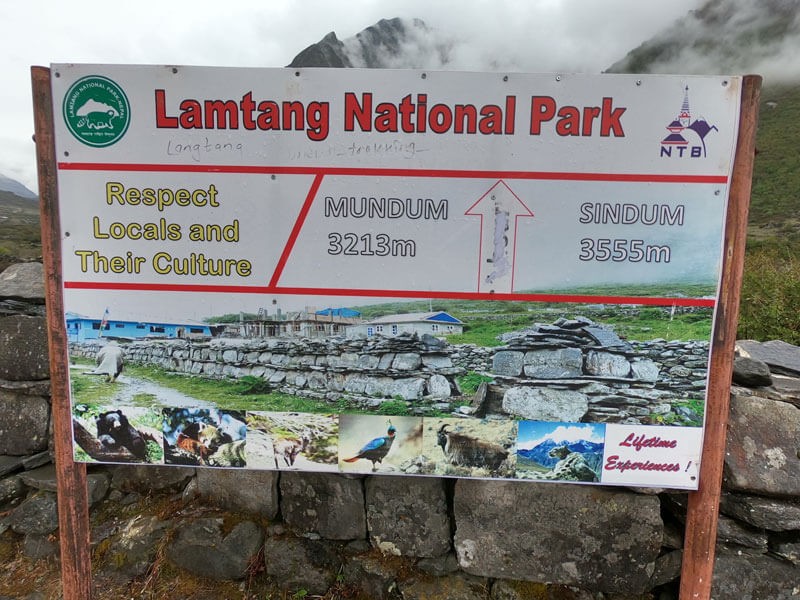
It is home to endangered animals like the red panda, the snow leopard, musk deer, and so on. The elevation of the national park ranges from 1,000 meters to 7,234 meters above sea level at the summit of Langtang Lirung.
Impact of the 2015 Megha Earthquake in Langtang Valley
The avalanche in Langtang Valley and the earthquake claimed the lives of 310 people, including 175 locals, 80 tourists, 10 soldiers, and 100 unidentified people. The earthquake claimed the lives of 80 tourists, 10 soldiers, and 100 unidentified people.
Nepal had a devastating earthquake with a 7.8 magnitude on the Richter Scale. The central and eastern regions Surprisingly, only one region suffered significant damage. Langtang was one of them.
It's amazing that one building survived this catastrophe. People have restored their hope and established new settlements just above the previous valley.
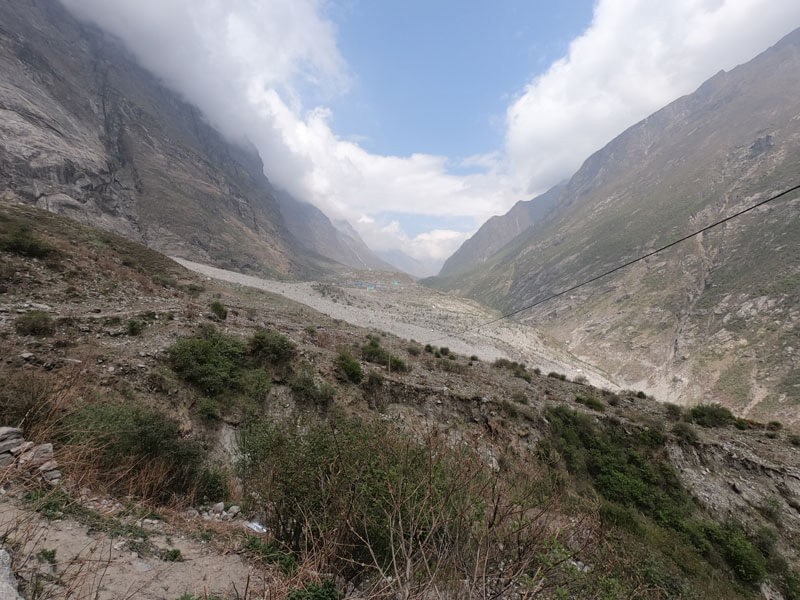
You must know the alternative routes in Langtang Valley
The Langtang region is not only about a single route. It has other unique trails en route to Langtang Valley. Some of them are:
Explore Unique Culture on Tamang Heritage Trail
Tamang Heritage Trail is a hidden treasure of the Langtang region.
You can either start or end at the Tamang Heritage Trail. We would recommend starting from Tamang Heritage and continuing to Langtang Valley.
The trail goes up from Syabrubesi to Gatlang village. Later, the path joined the Langtang Valley Trek.
intriguing Gosaikunda Lake
Gosainkunda Trek is another interesting trail located in Langtang. Situated at a height of 4,380 meters, Gosainkunda has significant religious as well as natural values.
Not only is this trail religious, but it also has one of the best panoramic skyline views around Nepal. The view consists of the Manaslu Range, Ganesh Himal, and Langtang Ra You can start this trek from Kathmandu and end it towards Langtang, or the other way around.
You can start the trek from Kathmandu and end it in Langtang, or you can do the opposite. To finish the trek to Gosaikunda, it is preferable to begin it. Moreover, it will be time-saving.
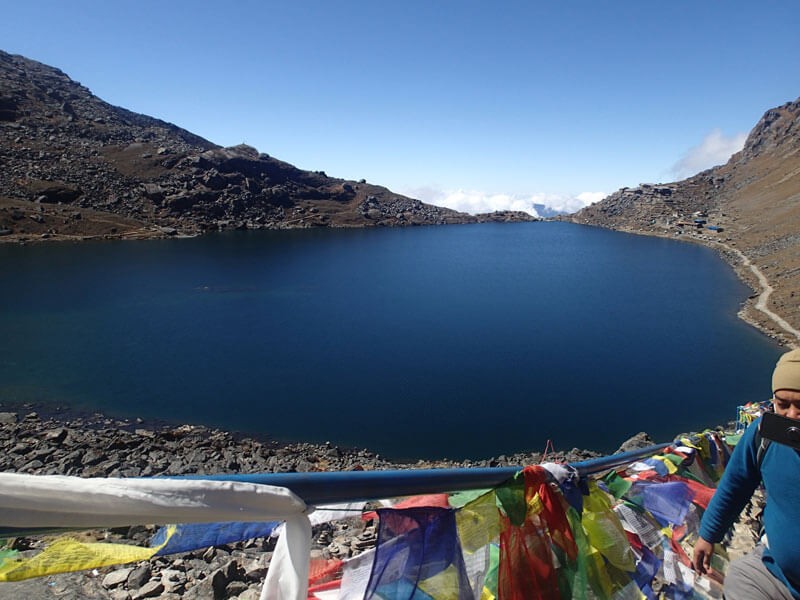
All of the above
For the ultimate trekking experience in Langtang, you can include all the treks mentioned above. It can be a pleasant trek with the contrasting religious values of Buddhism and Hinduism as well
It is better to start from the Tamang Heritage Trail than toward Langtang Valley. And end through the Gosaikunda trek.
Some Important TIPS to remember before the Langtang Trek
Last but not least, here are some points you should know before starting the Langtang trek. Here are some tips for the Langtang Trek Guide.
- It is not the easiest trek. Keep in mind, the initial portion may challenge your abilities.
- Always greet ‘Namaste’ by joining both hands.
- Say no to pollution.
- Get permission before taking a picture of someone.
- Respect the culture, tradition, locals, and religious values.
- Walk through the left side of Buddhist monuments, chortens, or stupas.
- Be aware of landslide zones.
- You can get safe drinking water throughout the trek.
- Remember to taste the authentic cheese in Kyanjin Gompa.
Conclusion
So, this was the ultimate guide for the Langtang Valley Trek. We hope it helped plan your next trip. If you have any confusion, we look forward to serving you again in the future. us. We will always be right at your service. We look forward to serving you again in the future.
